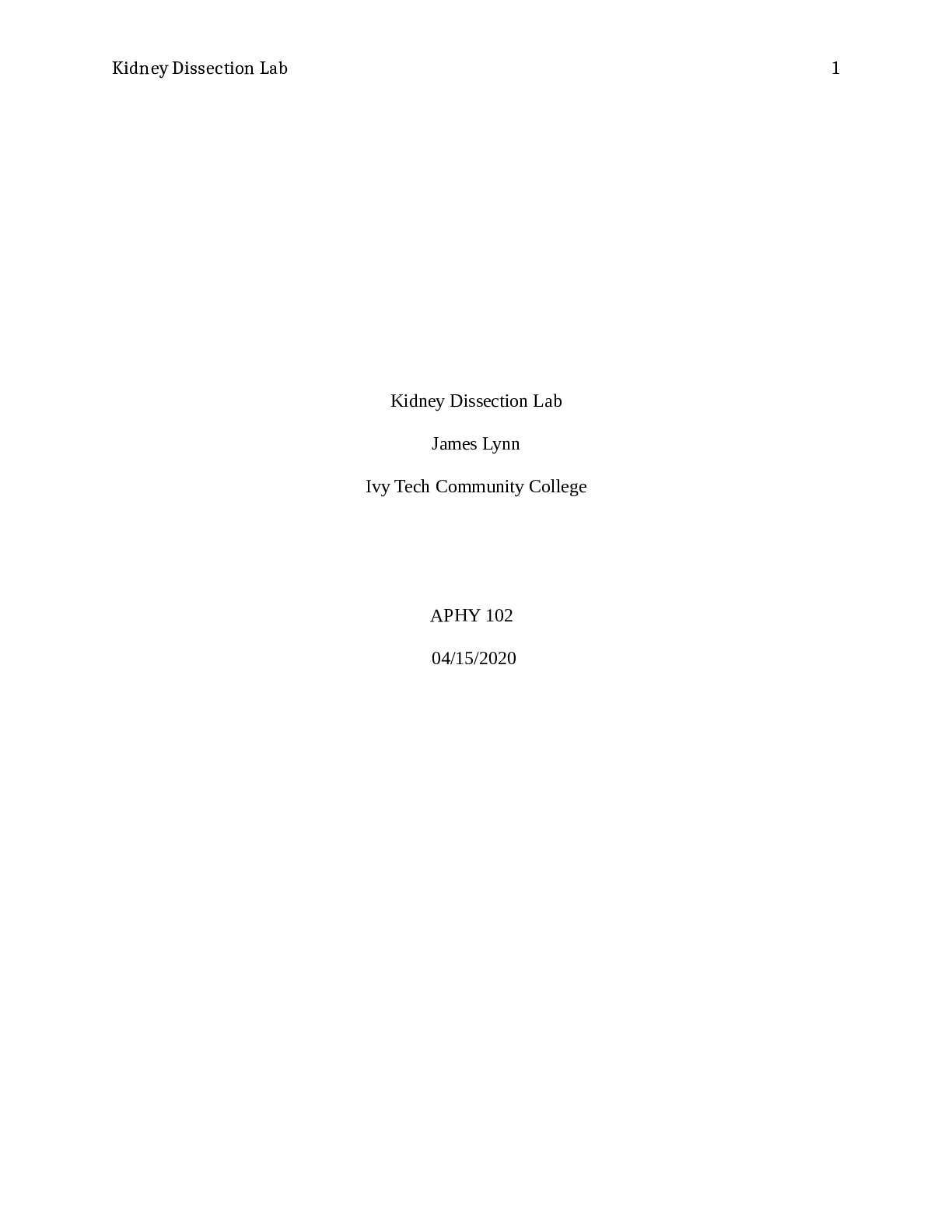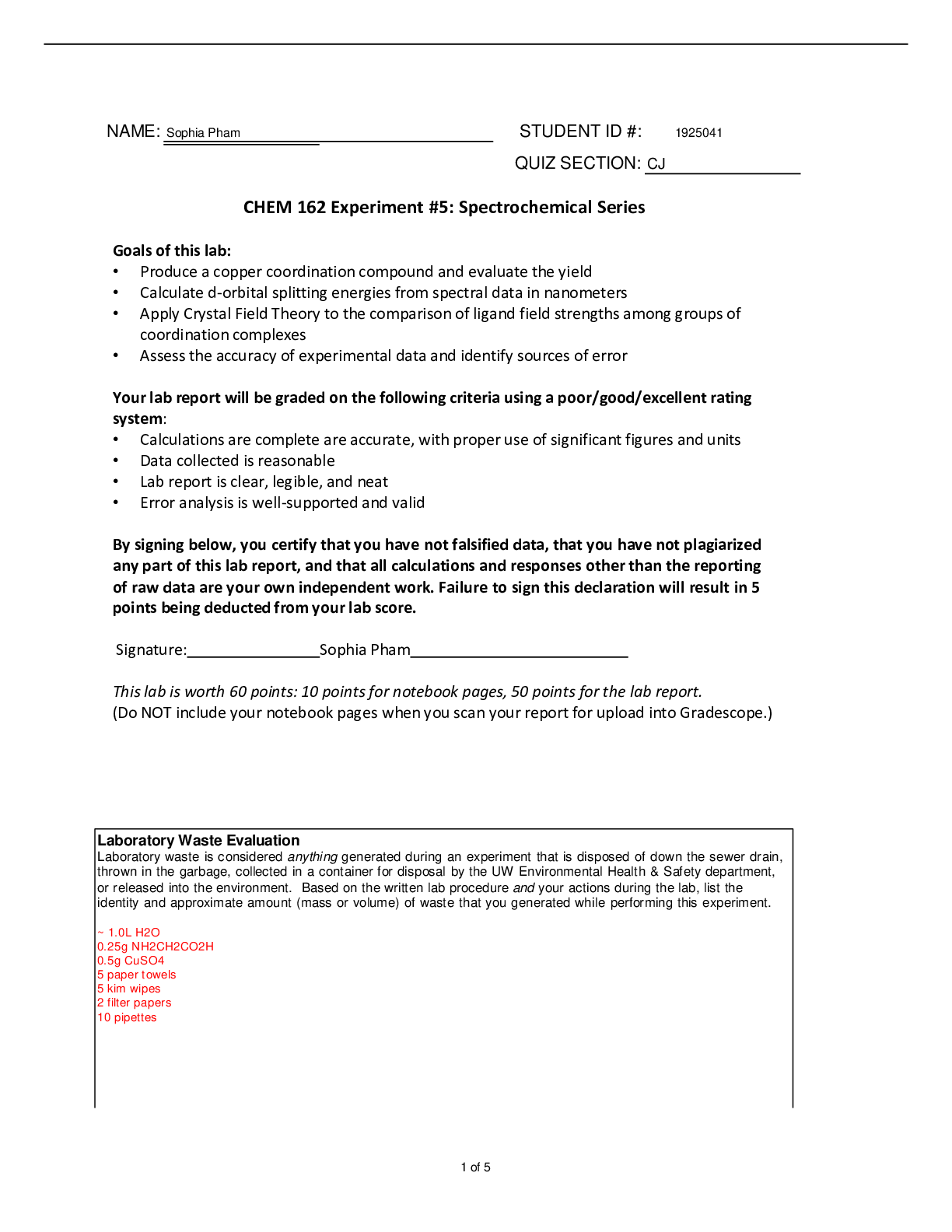Micro Biology > Lab Report > BIOS 242 Week 3-OL, Lab 3: The Gram Stain: Identify and differentiate bacteria. GRADED A+ (All)
BIOS 242 Week 3-OL, Lab 3: The Gram Stain: Identify and differentiate bacteria. GRADED A+
Document Content and Description Below
Lab 3: The Gram Stain: Identify and differentiate bacteria Learning Outcomes • Describe the structure of the Gram-positive and Gram-negative bacteria. • Identify theoretical and technical a ... spects of the Gram staining procedure. • Identify the most commonly made mistakes in Gram staining. • Analyze the results of a Gram staining experiment using a light microscope. About the Gram Stain: Identify and differentiate bacteria Virtual Simulation Lab Did you know that there are approximately 5 million-trillion-trillion bacteria in the world? Most of them are harmless, but some can induce disease in an affected host. In this simulation, you will help doctors identify bacteria in a cerebrospinal fluid sample from a patient suspected of suffering from bacterial meningitis. Explore the bacterial cell wall Compare and contrast the cell wall of Gram-positive and Gram-negative bacteria by building your very own bacterial 3D models on the hologram table. Enter the exploration pod to observe in an immersive animation how the four reagents of the Gram stain interact with structural components of the cell wall to color the bacteria. Perform the gram stain When the patient’s fluid sample arrives at the laboratory, equip yourself with protective gear to prepare a bacterial smear and heat fix it to a glass slide. You are now ready to perform the Gram stain in a safe virtual environment. Made a mistake? No worries, hit the big red button on the workbench to repeat the staining procedure until it becomes second nature. Interpret your findings using a microscope In the end, you will use a light microscope to interpret the results of your Gram stain. View the microscopic image on the computer screen, and apply immersion oil to increase magnification 1000x! Will you be able to identify the presence of any bacteria in the patient´s cerebrospinal fluid? Questions: 1. Purpose: Please describe in complete sentences and in your own words, the purpose of this experiment. The purpose of this experiment was to learn about the gram negative and gram-positive bacteria and their composition. As well as learning to identify them through the gram staining method. 2. Complete the following table by predicting colors of bacteria with- and without cell wall as they are processed through the steps of Gram staining. Steps of Gram Staining Bacteria containing thick cell wall Bacteria containing thin cell wall (LPS) Crystal violet treatment purple purple Iodine purple purple Decolorization purple clear Safranin purple pink 3. A fellow student showed you a gram stained slide where cells containing thick cell walls were stained pink. What would you tell her about the staining procedure? Why? I would tell her that she must have not performed the procedure correctly or contaminated the slide. This is because gram positive cells have thick cell walls that would be stained purple if correctly stained and gram-negative cells with thin cell walls would be stained pink. 4. A fellow student showed you a gram stained slide where cells containing LPS were stained purple. What would you tell her about the staining procedure? Why? I would tell her that either she did not finish the staining and may need to use the decolorization in order to get the cells to be clear the stain with the Safranin in order to turn them pink. Or that she may have contaminated her stain and incorrect stained the bacteria. 5. Reflection: Write 5 sentences on what you learned from this simulation. What did you like and what was something that you would prefer not be a part of this simulation? What I learned through this simulation was how to properly do the staining method which includes flooding with crystal violet dye, adding iodine, then washing with alcohol to decolorize and then stain with the Safranine to stain the gram negative bacteria pink. With this method we can figure out what kind of bacteria might have infected a patient. As seen in the simulation the patient had diplococcus bacteria in the cerebral spinal fluid. This can be very dangerous and even fatal if not diagnosed or treated quickly. I learned that it is important to add the correct solutions at the correct times as well as washing the slides off with distilled water after each solution in order to prevent contamination. Grading Rubric: Activity Deliverable Points Lab Report and Questions Complete lab report and answer questions • Purpose (1 point) • Questions (9 points) • Reflection (5 points) 15 All Lab Deliverables Complete ALL lab work and lab report 15 [Show More]
Last updated: 3 years ago
Preview 1 out of 3 pages
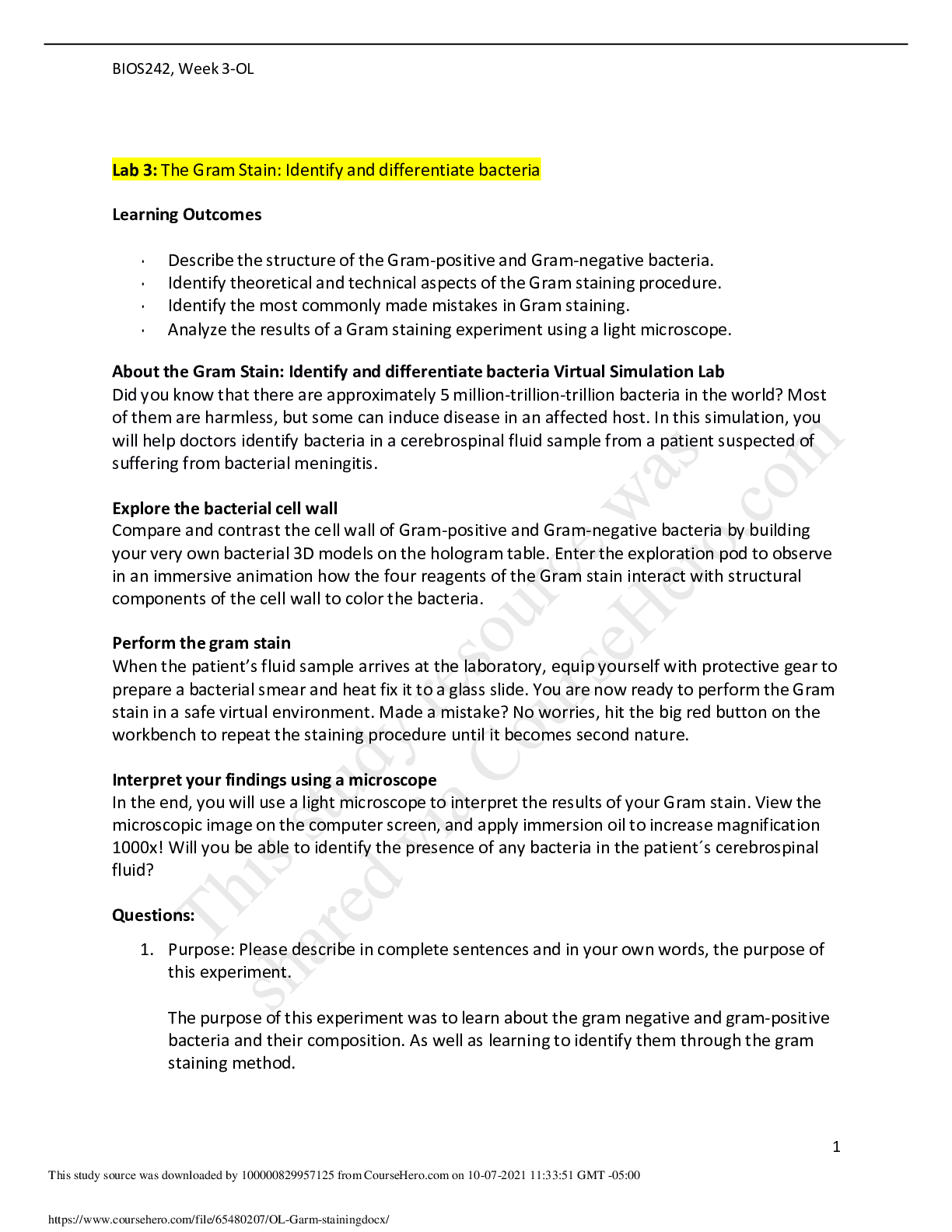
Buy this document to get the full access instantly
Instant Download Access after purchase
Buy NowInstant download
We Accept:

Also available in bundle (1)
Click Below to Access Bundle(s)
 Questions and Answers GRADED A STRAIGHTLINE.png)
BIOS - 242 Week 1 - 8; OL- Lab,Assignments,Quiz, Exams ( Midterm plus End term) Questions and Answers ; Real Exam Summer BUNDLE (GRADED A+).
BIOS - 242 Week 1 - 8; OL- Lab,Assignments,Quiz, Exams ( Midterm plus End term) Questions and Answers ; Real Exam Summer BUNDLE (GRADED A+).
By Prof. Goodluck 4 years ago
$14
23
Reviews( 0 )
$7.00
Can't find what you want? Try our AI powered Search
Document information
Connected school, study & course
About the document
Uploaded On
Oct 07, 2021
Number of pages
3
Written in
All
Additional information
This document has been written for:
Uploaded
Oct 07, 2021
Downloads
0
Views
204


.png)

.png)
.png)
.png)
.png)
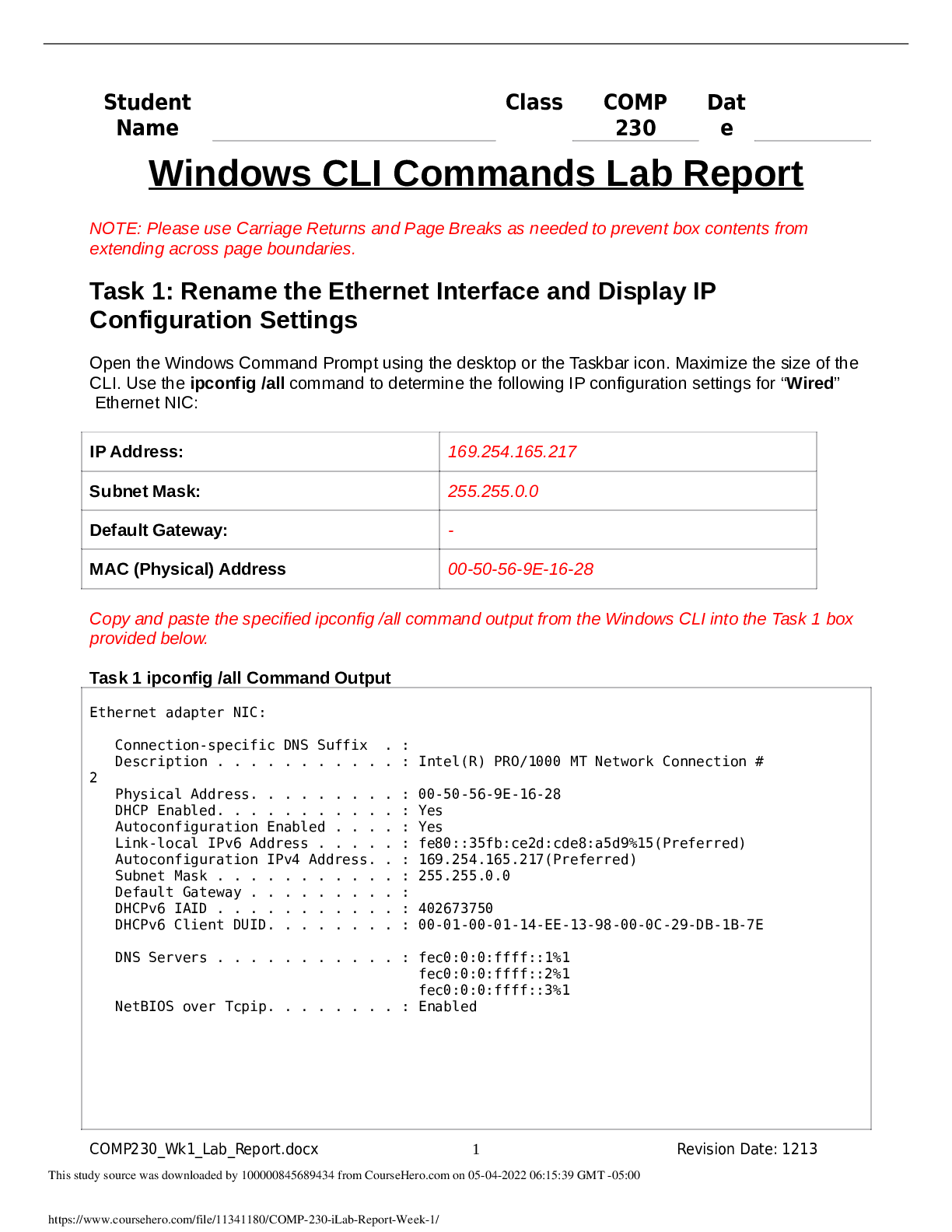

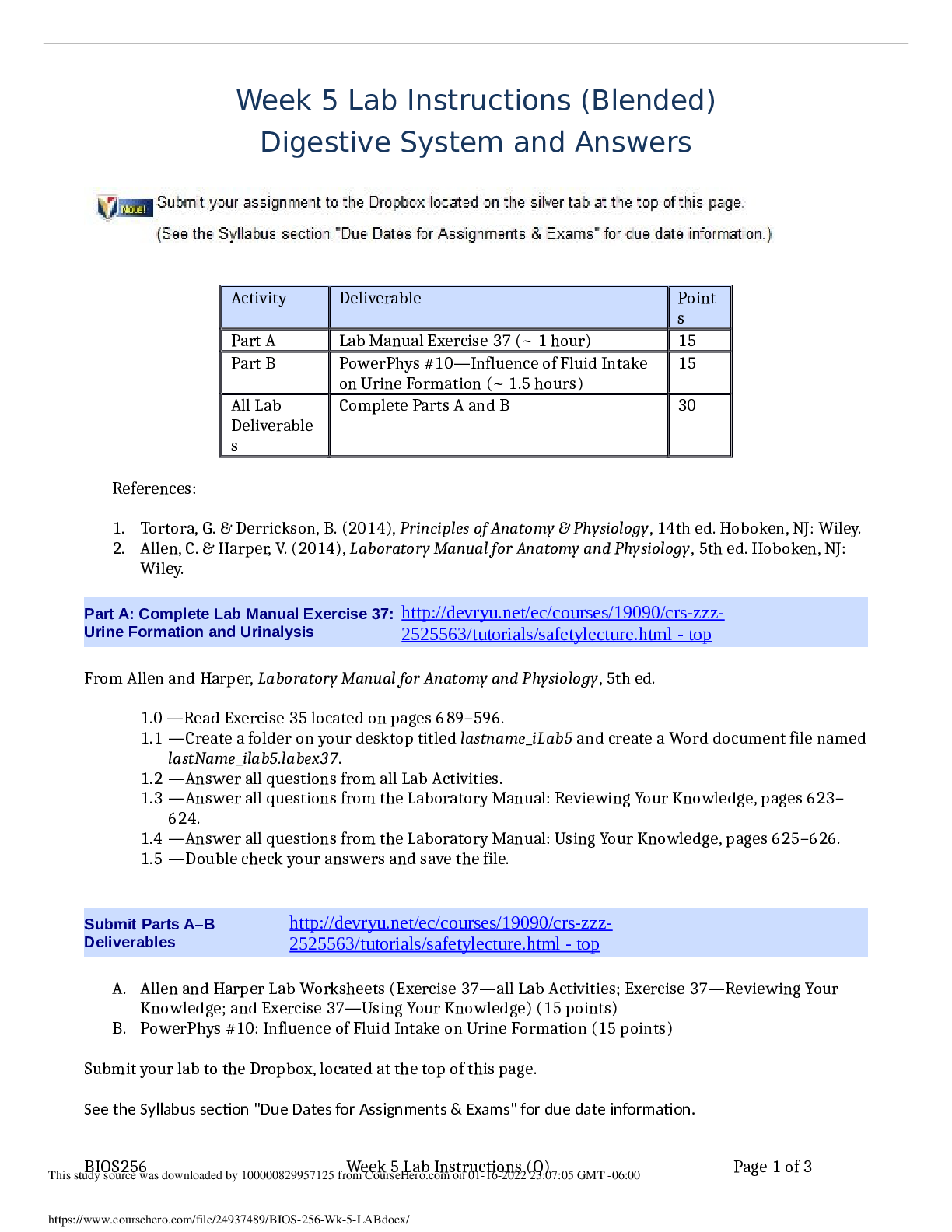

 (1).png)
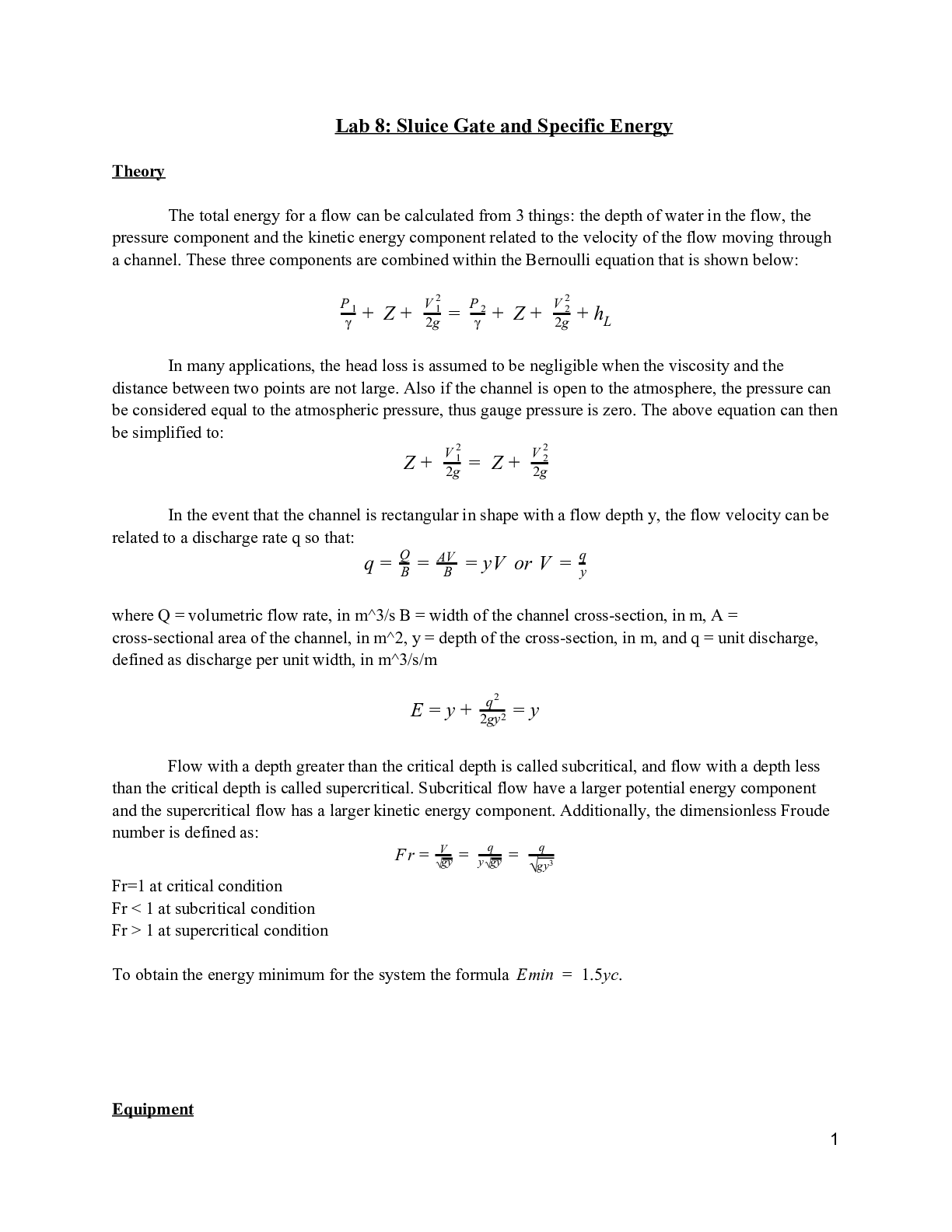
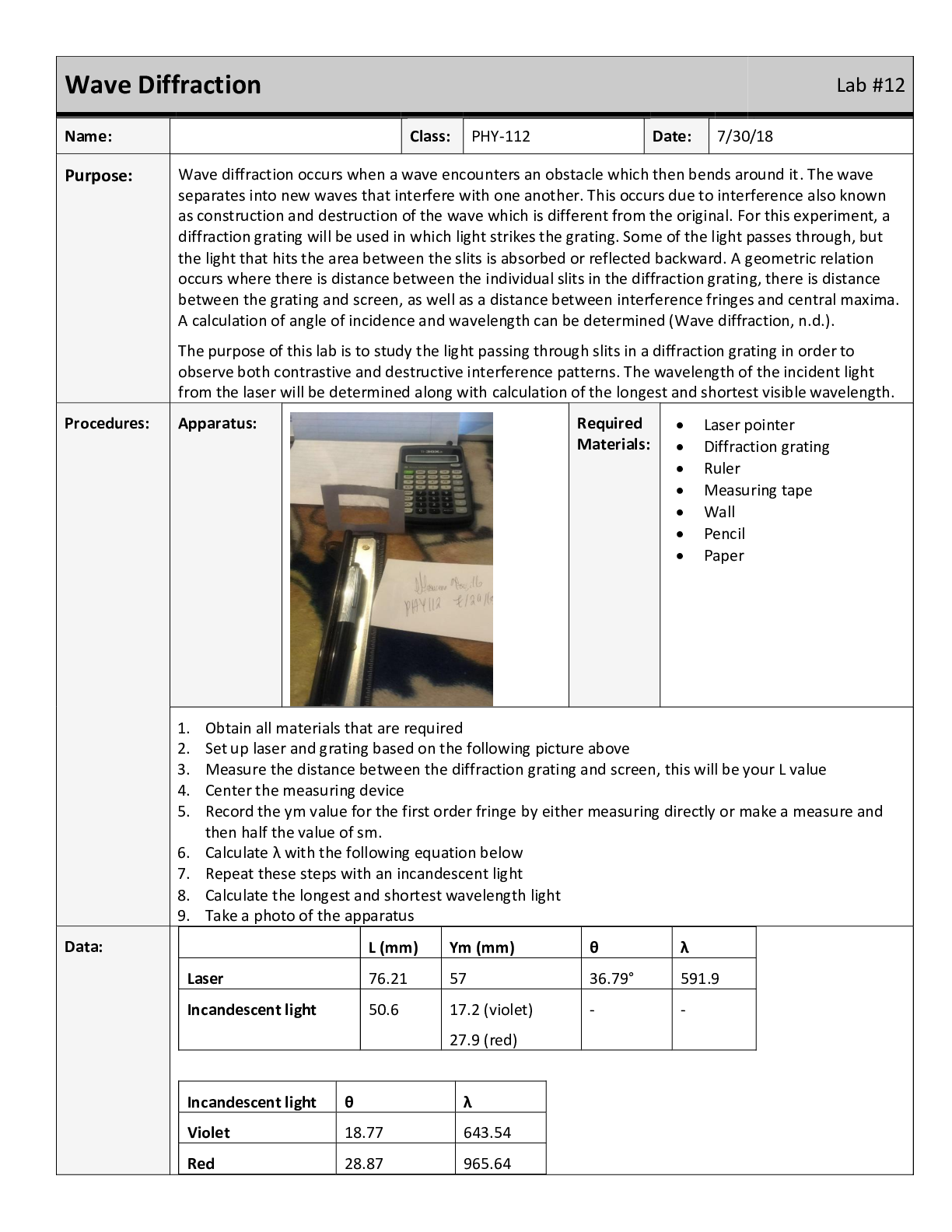

.png)

